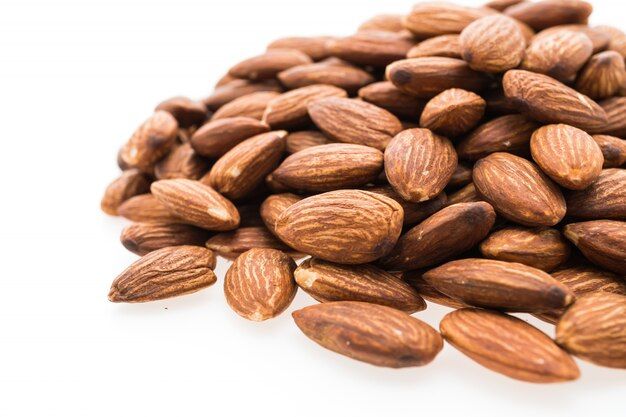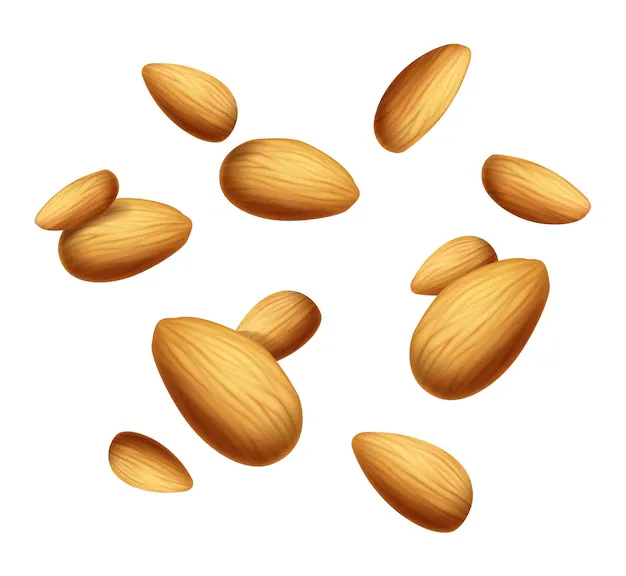Almonds, the seeds of the fruit of the Prunus dulcis tree, are a highly nutritious and economically significant crop. Native to the Middle East, almonds are now widely cultivated across the globe, with major production areas in regions such as California, Spain, and Australia. The cultivation of almonds, the benefits of eating almonds, and their nutritional value are all integral to understanding why they are considered one of the healthiest nuts available. This essay will explore the almond cultivation system, the benefits of consuming almonds, and their rich nutritional profile.
Almond Cultivation System
Almond trees thrive in Mediterranean climates, characterized by hot, dry summers and mild, wet winters. The trees are typically grown in areas with well-drained, slightly acidic soils. Almond cultivation is highly labor-intensive and requires careful management to ensure successful production. The process of almond farming can be broken down into several key steps, from soil preparation to harvesting.

and Climate Requirements
Almond trees require a temperate climate with a significant difference between summer and winter temperatures. They are hardy and can tolerate some drought, but they require regular water during the growing season. However, excessive rainfall, particularly during the blossoming period, can cause fungal infections. Therefore, irrigation systems are commonly used, especially in drier regions like California. Almond trees are also sensitive to late spring frosts, which can damage their blossoms, thereby impacting the yield.
Planting and Care
Almond trees are typically propagated through grafting, where a desirable cultivar (variety) is grafted onto rootstocks that are resistant to soil-borne diseases. The trees are planted at a spacing of 15 to 25 feet apart, ensuring enough room for growth. The first year or two are focused on establishing the root system and developing a strong tree structure. Almond trees grow to a height of about 10-15 feet, and once mature, they begin bearing fruit.
Pruning is an essential part of almond cultivation. It helps to maintain the tree's shape, promotes good airflow, and encourages higher yields. Pruning also helps reduce the risk of disease and pests. The trees are often pruned to a central leader form, where the main stem is left to grow upward, with branches being trimmed to encourage optimal fruiting.
Pollination and Harvesting
Almond trees are not self-pollinating, so they rely on cross-pollination between different varieties of almond trees. Beekeepers typically introduce honeybees to orchards during the bloom period to ensure effective pollination. The almond flowers, which are delicate and white or pale pink, bloom in early spring, typically in late February or March, depending on the climate.

Almond trees typically take 3 to 4 years to produce a small crop, and full production is reached by the 6th or 7th year. Once pollinated, the fruit takes about 7 to 8 months to mature. The almonds themselves grow inside hard shells that are encased in a green, fleshy hull. When the hull begins to split open, it signals that the almonds are ready to be harvested, typically in late summer or early autumn.
Harvesting almonds is a labor-intensive process. The trees are shaken using mechanical tree shakers, causing the almonds to fall to the ground. Afterward, the almonds are collected, cleaned, and dried to reduce moisture content, which helps prevent mold growth and preserves their quality.
Benefits of Eating Almonds
Almonds are often considered a superfood due to their impressive array of health benefits. Regular consumption of almonds can have significant positive effects on various aspects of health, including heart health, weight management, and cognitive function.
A. Cardiovascular Health
One of the most widely recognized benefits of almonds is their positive impact on cardiovascular health. Almonds are rich in monounsaturated fats, which are considered heart-healthy fats. These fats help lower "bad" LDL cholesterol levels and can reduce the risk of heart disease. In addition, almonds contain polyphenols, which have antioxidant properties that protect the heart from oxidative stress and inflammation. The high magnesium content of almonds also plays a vital role in maintaining healthy blood pressure, which is essential for overall cardiovascular health.

B. Weight Management
Despite being calorie-dense, almonds can be a useful food for weight management. The high fiber and protein content in almonds promote feelings of fullness and satiety, which can reduce overall calorie intake. Studies have shown that people who consume almonds regularly tend to have lower body mass indexes (BMIs) than those who do not. The combination of healthy fats, fiber, and protein makes almonds an ideal snack for those seeking to control their weight.
C. Blood Sugar Control
Almonds are a low glycemic index (GI) food, meaning they have a minimal impact on blood sugar levels. Consuming almonds as part of a balanced diet can help regulate blood sugar, making them a beneficial snack for individuals with diabetes or those at risk of developing the condition. Almonds also provide magnesium, which has been linked to improved insulin sensitivity, further contributing to blood sugar control.
D. Brain Health
Almonds are rich in vitamin E, a potent antioxidant that helps protect the brain from oxidative damage. Studies suggest that vitamin E may reduce the risk of cognitive decline and conditions such as Alzheimer's disease. The omega-3 fatty acids found in almonds are also beneficial for brain health, as they support the structure and function of brain cells.


E. Skin Health
Almonds are also beneficial for the skin due to their vitamin E content, which helps protect the skin from harmful UV rays and reduces the appearance of wrinkles. Regular consumption of almonds may help maintain youthful skin and reduce the signs of aging.
Nutritional Value of Almonds
Almonds are a powerhouse of essential nutrients. A typical serving of almonds, which is about 1 ounce or 23 almonds, contains approximately:
Calories: 160-170 kcal
Protein: 6 grams
Fat: 14 grams (of which 9 grams are monounsaturated fats)
Carbohydrates: 6 grams
Fiber: 3.5 grams
Sugars: 1 gram
Vitamin E: 7.3 mg (37% of the recommended daily value)
Magnesium: 76 mg (19% of the recommended daily value)
Calcium: 75 mg (8% of the recommended daily value)
Iron: 1.0 mg (5% of the recommended daily value)

Almonds are also an excellent source of B vitamins, particularly riboflavin and niacin, which play a crucial role in energy metabolism. Additionally, they contain trace minerals like zinc and potassium, which are important for immune function, muscle health, and hydration.

Almonds are a versatile and highly nutritious food that provides numerous health benefits. From their positive effects on heart health and weight management to their ability to support brain function and skin health, almonds are a valuable addition to any diet. The cultivation of almonds requires a favorable climate, careful management, and attention to detail, but the resulting product is a nutrient-dense food that can benefit people worldwide. By incorporating almonds into daily meals, individuals can enjoy not only their delicious flavor but also their impressive nutritional value and health benefits.
video credit Imagine channel
So far Today...
Stay Home
Thanks for Your Time Friend.
♥♥♥♥♥♥
Ok
See you Again in a New blog.
Thanks for being with me.
Plese Follow Me......
@mspbro
★★To contact me★★
Subscribe My 3speak Channel https://3speak.online/user/mspbro
Follow me Twitter https://twitter.com/mdsumonpra
Add me Facebook https://www.facebook.com/sumon.mim84





